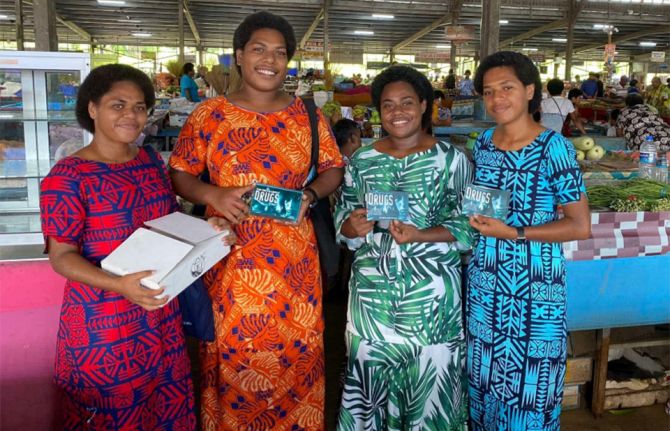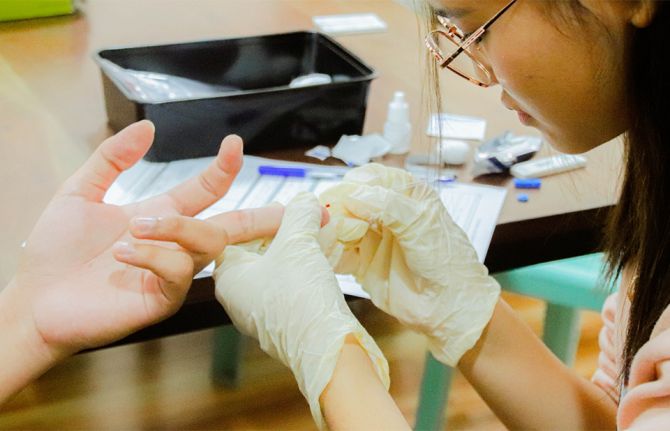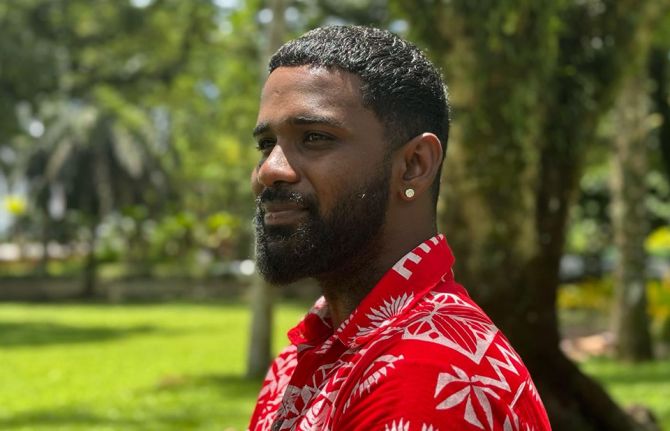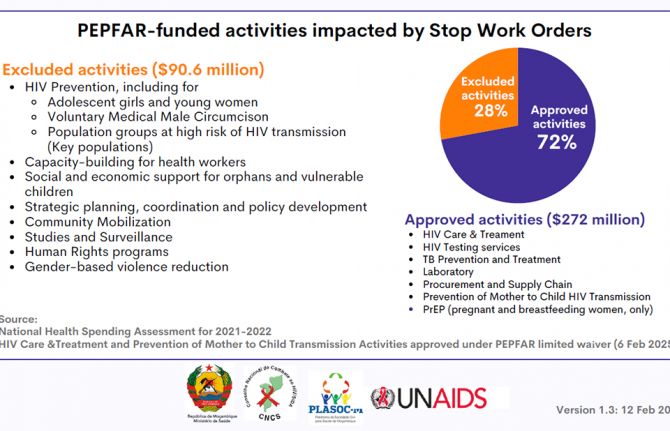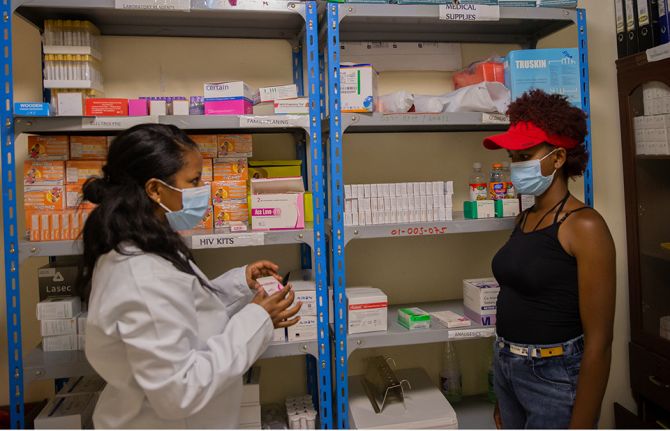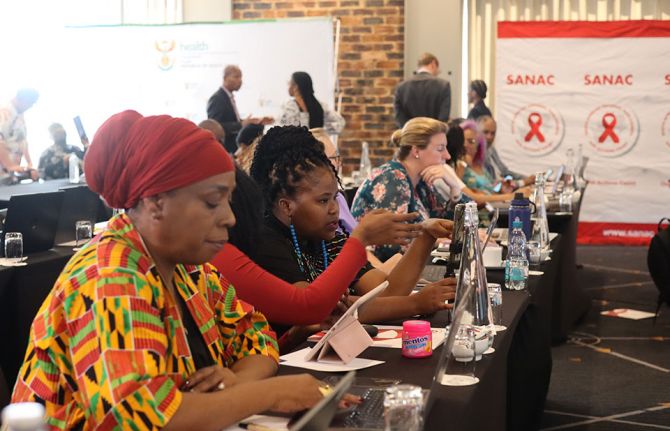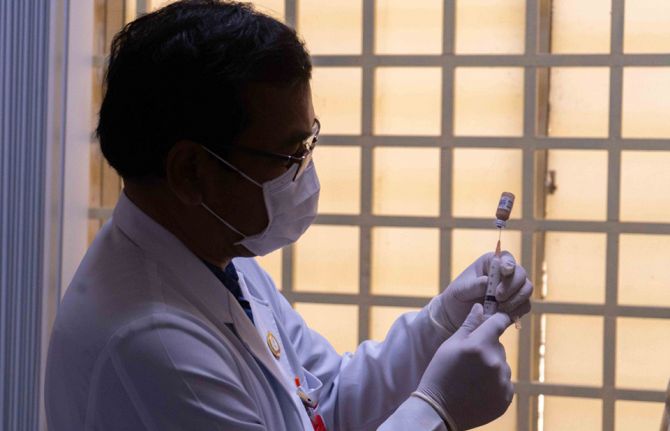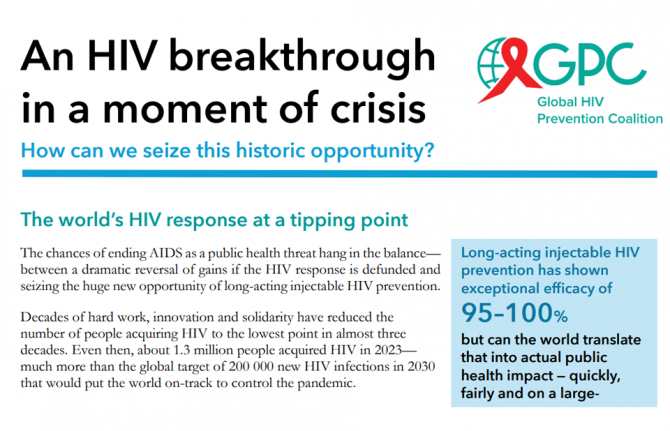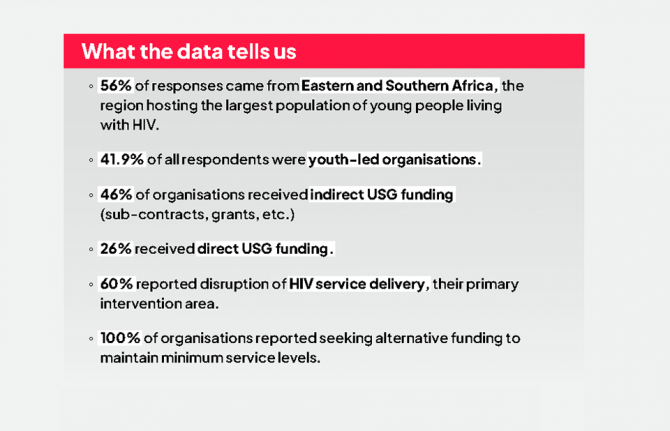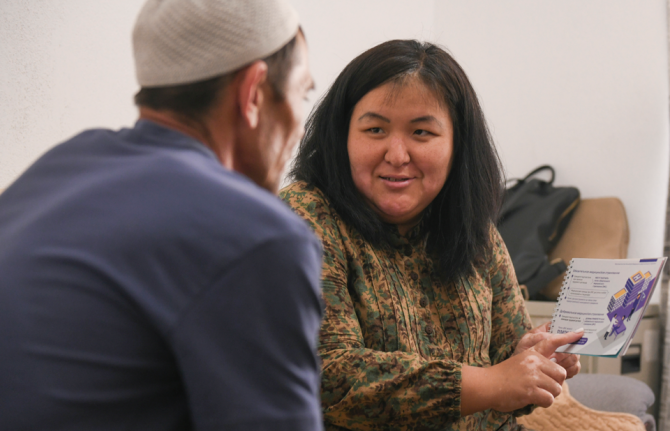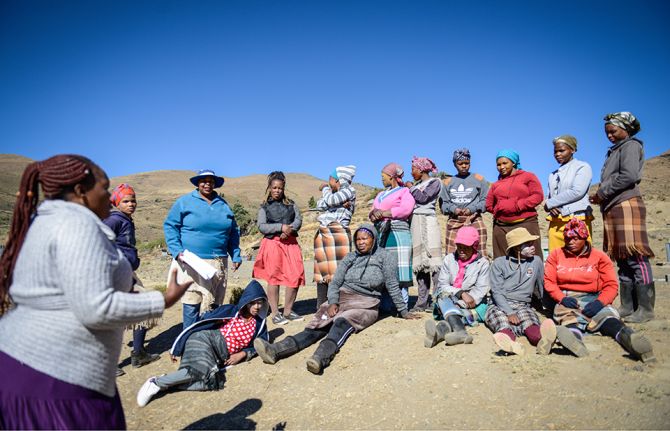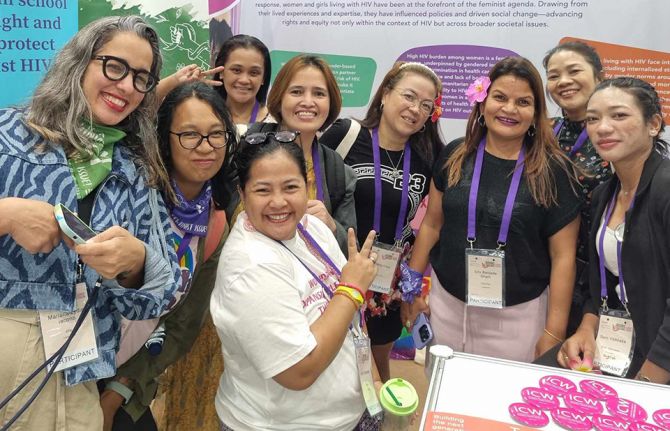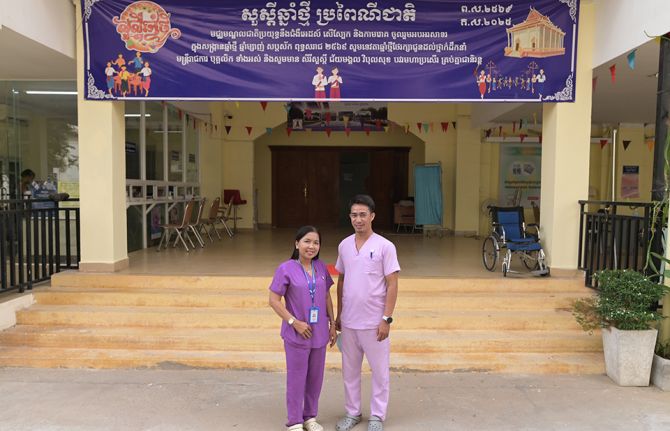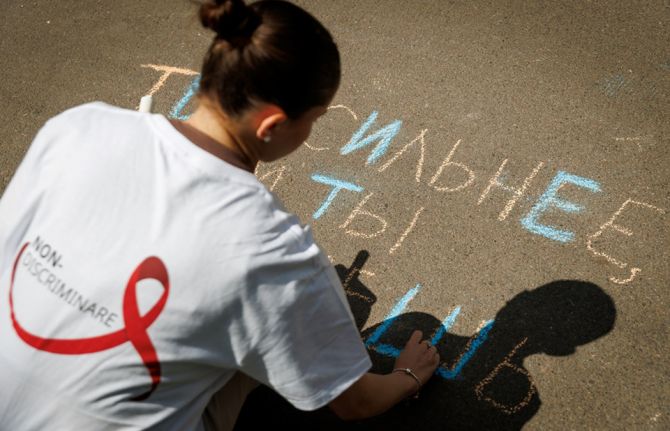
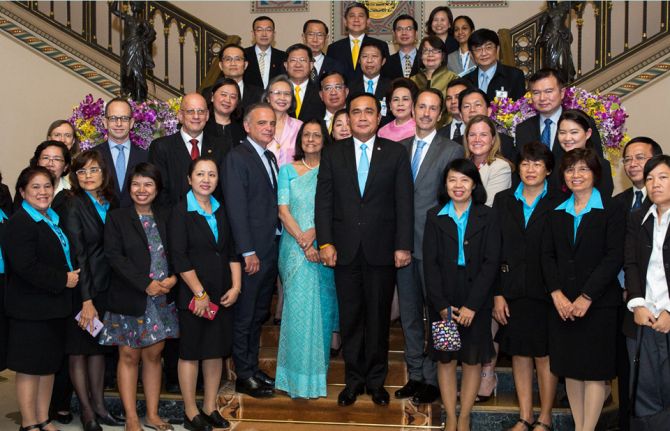
Update
Prime Minister of Thailand celebrates the country’s success in eliminating mother-to-child transmission of HIV and syphilis
20 June 2016
20 June 2016 20 June 2016The Prime Minister of Thailand, Prayut Chan-o-cha, received a certificate from the World Health Organization (WHO) on 20 June confirming the elimination of mother-to-child transmission of HIV and syphilis in the country. Thailand is the first country in Asia to reach the milestone, which was officially announced earlier this month at the United Nations General Assembly High-Level Meeting on Ending AIDS.
UNAIDS Deputy Executive Director Luiz Loures, WHO Regional Director for South-East Asia Poonam Khetrapal Singh, the Minister of Public Health of Thailand, Piyasakol Sakolsatayadorn, and representatives of other organizations and partners participated in the event, which took place in Bangkok, Thailand.
According to Thailand’s Ministry of Public Health, 98% of all pregnant women living with HIV have access to antiretroviral therapy and the rate of mother-to-child transmission of HIV has been reduced to 1.91%. WHO’s global guidelines consider mother-to-child transmission of HIV to be effectively eliminated when the rate of transmission falls below 2%.
In 2000, an estimated 1000 children became infected with HIV through mother-to-child transmission. By 2015, that number had dropped to 85. This is a significant achievement in a country where an estimated 440 000 people were living with HIV in 2015.
Quotes
“This is part of the country's policy to implement programmes that start from the day of birth. This success is due to cooperation between the state, the private sector, international organizations and the public.”
“The elimination of mother-to-child transmission in Thailand is an important milestone in our efforts to end the AIDS epidemic by 2030. Thailand’s visionary and engaged leadership has made this achievement possible.”
Region/country

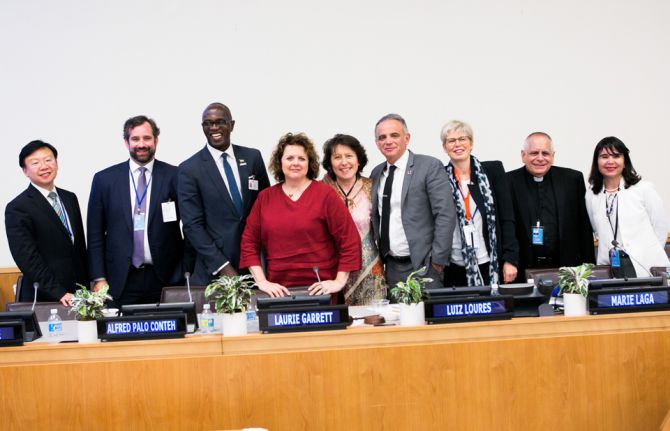
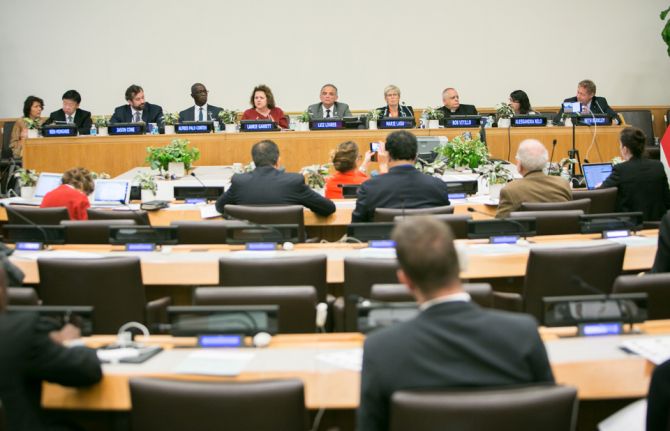
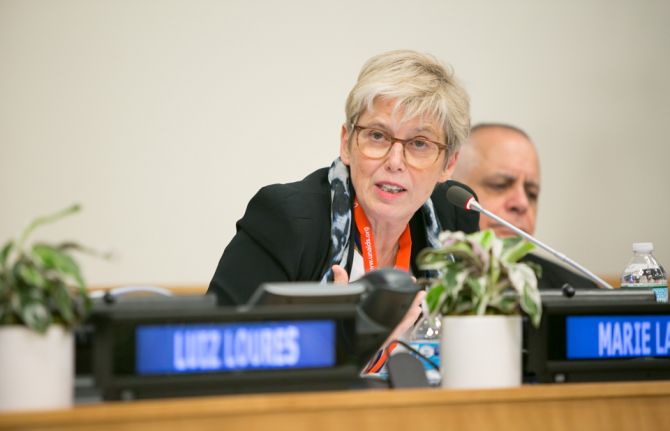
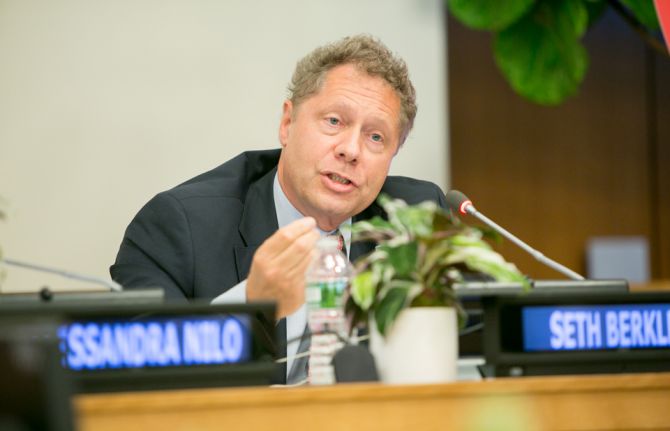
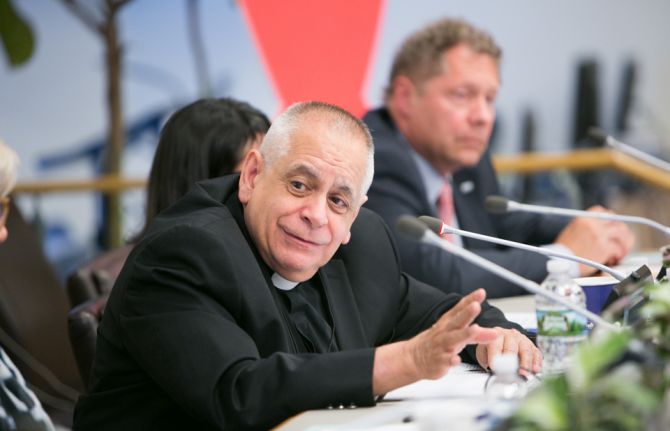

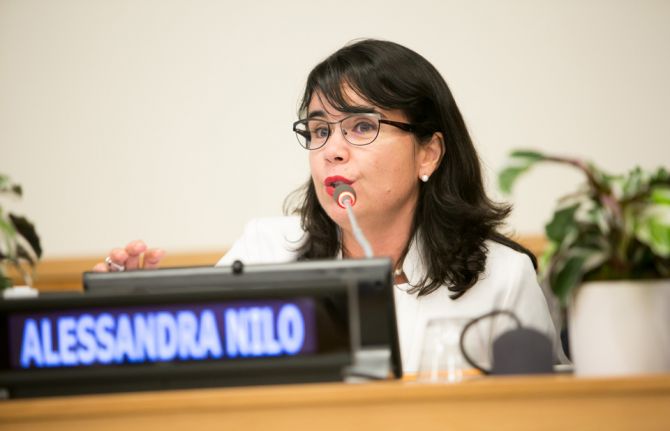
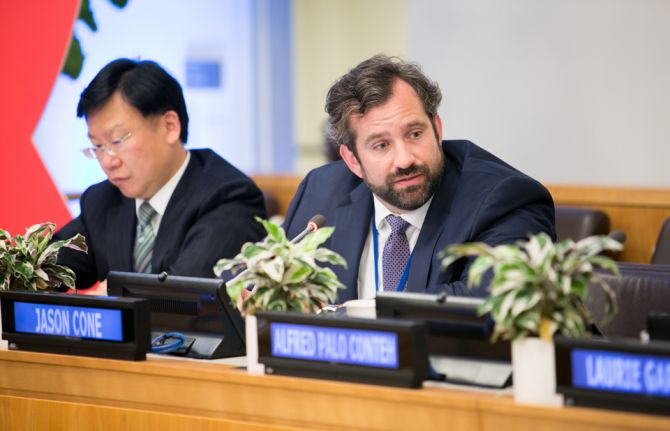
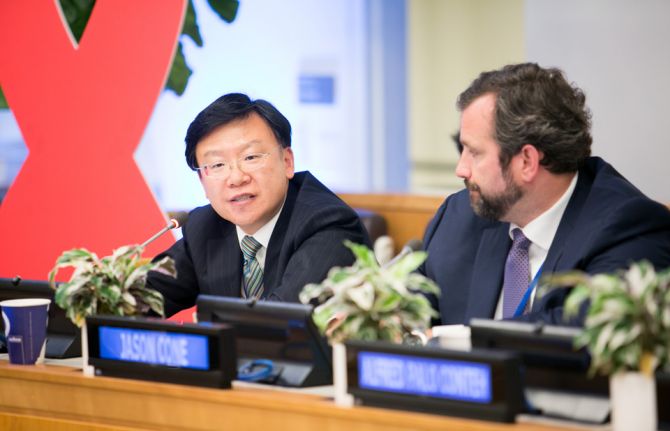
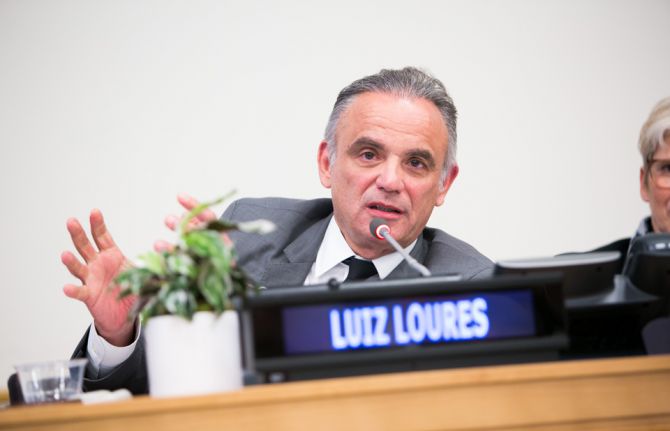
Update
Learning the lessons of responding to emerging epidemics, including AIDS, Ebola and Zika
09 June 2016
09 June 2016 09 June 2016The best ways to respond to emerging epidemics have been outlined by leading policy-makers and health advisers during a side event entitled “Addressing global health emergencies: lessons from AIDS to Ebola, Zika and other emerging epidemics” that took place on 9 June.
Political leadership, the involvement of communities and a joined-up emergency response were highlighted as vital at the side event, which took place on the margins of the United Nations General Assembly High-Level Meeting on Ending AIDS, held from 8 to 10 June in New York, United States of America.
The response to AIDS and, more recently Ebola and Zika, was used as a starting point to explore what lessons could be learned.
The discussion was chaired by Deputy Executive Director of UNAIDS Luiz Loures and moderated by Laurie Garrett of United States think tank the Council on Foreign Relations.
Panellists at the side event included Sierra Leone’s Minister of Internal Affairs, Alfred Palo Conteh, the Executive Director for Gestos, Brazil, Alessandra Nilo, the Executive Director of Doctor Without Borders, Jason Cone, the World Health Organization’s Assistant Director-General for HIV/AIDS, Tuberculosis, Malaria and Neglected Tropical Diseases, Ren Minghui, a professor from the Belgium Institute of Tropical Medicine, Marie Laga, and Monsignor Robert Vitillo, Special Adviser on Health and HIV to relief agency Caritas Internationalis.
The participants discussed how evidence from three decades of responding to HIV proved that responding to issues head-on within communities and engaging people living with HIV were essential.
The many similarities between HIV and outbreaks of Ebola and Zika allowed the participants to explore best practice when dealing with rapidly growing epidemics that are closely linked to poverty, inequality and gender.
The participants also examined how to overcome the fear, stigma and discrimination associated with epidemics so closely linked to sensitive topics, such as death and sexual behaviour.
The recommendations made at the side event included that steps should be taken to understand the cultural context of epidemics and that managing finances at the global level was necessary in order to tackle epidemics.
Other recommendations included integrating sexual, reproductive and human rights imperatives into the response, aligning new capacities to develop timely diagnostics, vaccines and medicines, ensuring that there are sufficiently qualified human resources and developing strong laboratory infrastructure and surveillance systems.
Quotes
“We know we need to go beyond the Political Declaration from earlier this week. What we do now needs to make sense. There’s no way to address AIDS today without working with and learning from the responses to many other emerging diseases.”
“In every single outbreak, we see stigma and we engender disproportionate fear. And yet those patients are the ones who should be embraced, but society shuns them because of their illness.”
“We know it’s an evolutionary certainty to have outbreaks. The question is, is the world prepared for them? Does the world take this seriously? Do we have our priorities right?”
“I think one of the lessons we have failed to learn from other diseases is that guidelines and response plans are often completely divorced from the social and economic realities of those patients that need them the most. But whether it’s AIDS, Ebola, or polio, we need to look hard and focus on how we are going to reach those last-mile communities that we need to.”
“With all due respect to many of the public health experts and governments in the room, but sometimes we speak in a way that is not understood in the best ways for the community. And that dialogue with the community needs to happen earlier. In an emergency, we don’t have time for it.”
“I think what we have learned from Ebola was decentralization. When the local religious leaders spoke, people listened. Community engagement and decentralization are key to fighting these epidemics.”
“Why are we not talking about the state’s responsibility in addressing stigma as a priority, because stigma is never related to just one issue—sexuality, gender, HIV status … layers of stigma come together!”
Related

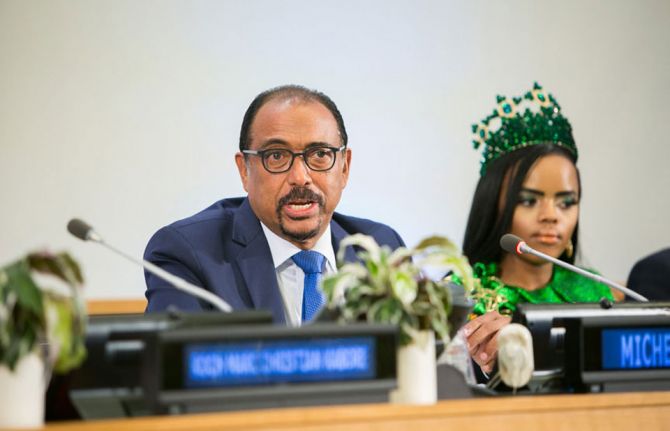

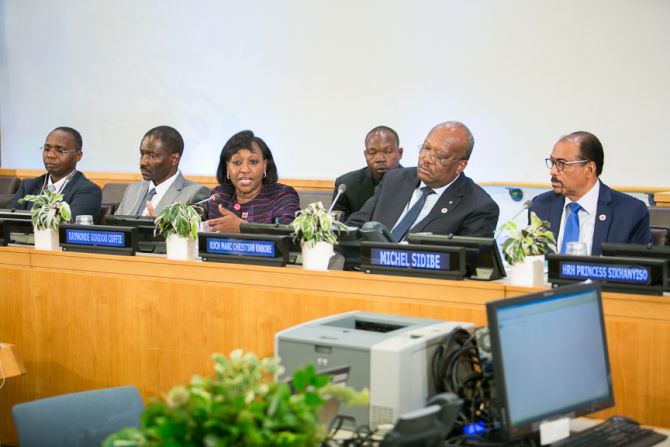

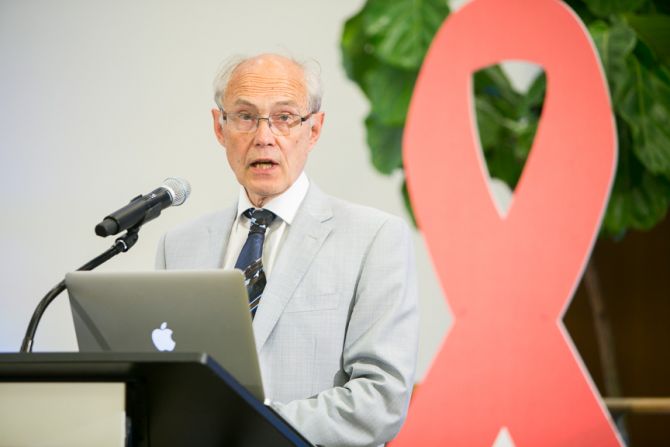
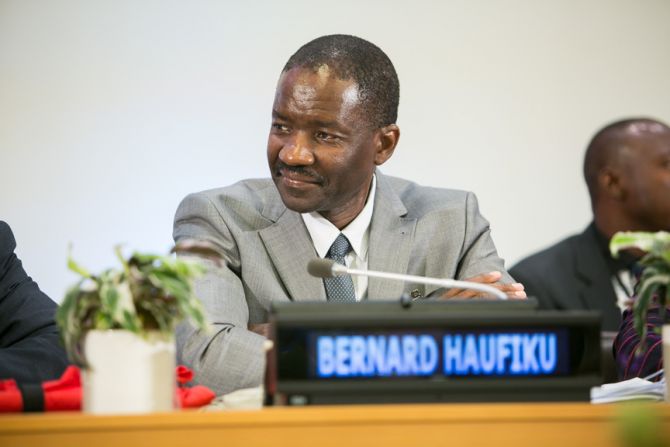

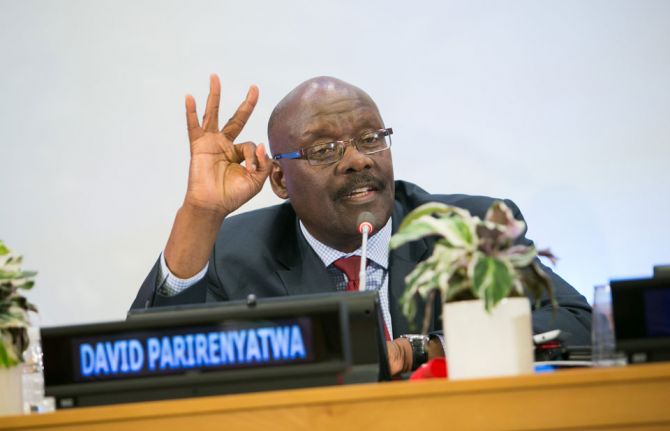
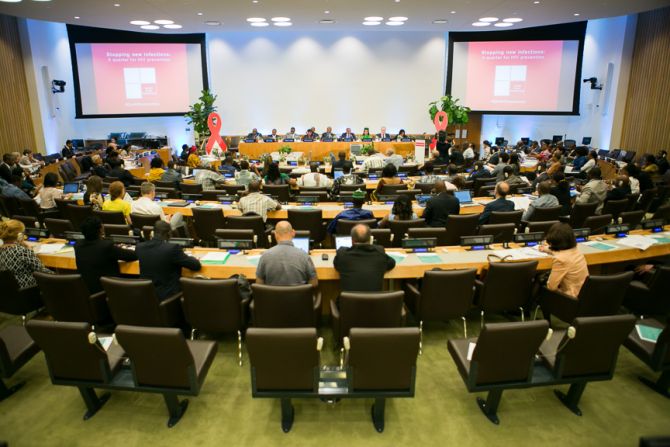
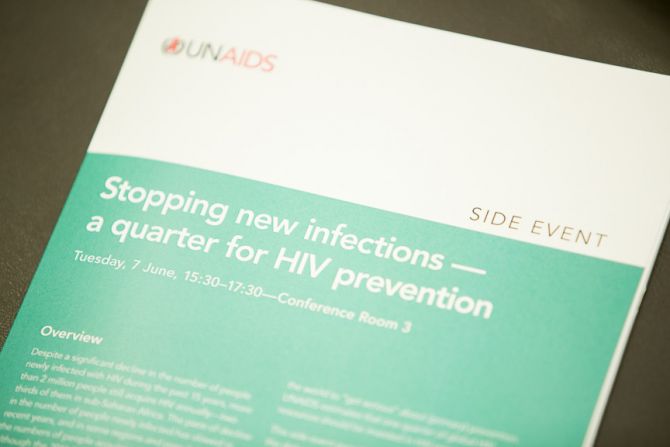
Update
Stopping new infections: a quarter for HIV prevention
07 June 2016
07 June 2016 07 June 2016UNAIDS Executive Director Michel Sidibé has called for combination prevention to be Fast-Tracked and for a thorough examination of investments in HIV prevention. Although HIV resources have grown overall, spending on prevention has not kept pace.
A side event held on the margins of the United Nations General Assembly High-Level Meeting on Ending AIDS, taking place from 8 to 10 June in New York, United States of America, heard that prevention needs to be taken more seriously and how at least a quarter of global HIV resources needed to be invested in prevention. Currently, countries spend as little as 10% on effective prevention methods and programmes.
The participants attending the event, entitled “Stopping new infections: a quarter for HIV prevention,” were told that treatment alone will not end the epidemic.
To reduce the number of people newly infected with HIV globally to the Fast-Track Target of fewer than 500 000 by 2020, towards ending the HIV epidemic as a public health threat by 2030, countries need to Fast-Track HIV combination prevention. However, new adult HIV infections are not declining fast enough to meet those targets.
Although there has been a significant decline in the number of new HIV infections since 2001, recent trends are disappointing. The most recent UNAIDS data released in the Global AIDS update 2016 on 31 May show that the number of new HIV infections has in fact stagnated since the High-Level Meeting on HIV and AIDS, held in 2011.
Increased provision and education around the use of condoms, pre-exposure prophylaxis and voluntary medical male circumcision were encouraged, alongside empowering young people and key populations to enable them to protect themselves.
The meeting, held on 7 June, heard that people have a right to be able to access prevention services. It was noted that investing in HIV prevention and reducing the number of new HIV infections will contribute to the sustainability of HIV treatment.
More than 2 million people are still newly infected with HIV annually, two thirds of whom live in sub-Saharan Africa. New HIV infections are particularly high among adolescent girls and young women in sub-Saharan Africa, with more than 5000 newly infected every week.
Addressing the meeting, Mr Sidibé said there was no magic bullet for HIV prevention—only a combination of behavioural, biomedical and structural programmes and approaches will stop new HIV infections.
Quotes
‘‘We must address the structural factors that exacerbate HIV vulnerability and empower young women and girls."
‘‘UNAIDS Executive Director has called for a quarter of global HIV resources to be invested in effective prevention. In Namibia, we shall invest 3o% in prevention of child and adult infections’.
“This is not just about being serious but also about getting real about HIV prevention. One quarter of global HIV resources will need to be directed to HIV prevention, while maintaining the momentum on treatment expansion’’.
‘‘My message is about the economic and fiscal risks inherent in failing to bring down new infections much faster than we have been seeing. Finance ministries, donors and the international institutions need to understand these risks and take action to address them’’.
‘‘National governments and donors must recommit to making condoms available to all through HIV and sexual and reproductive health services, targeting young people and key populations’’
Related information
Find out more about the #HLM2016AIDS

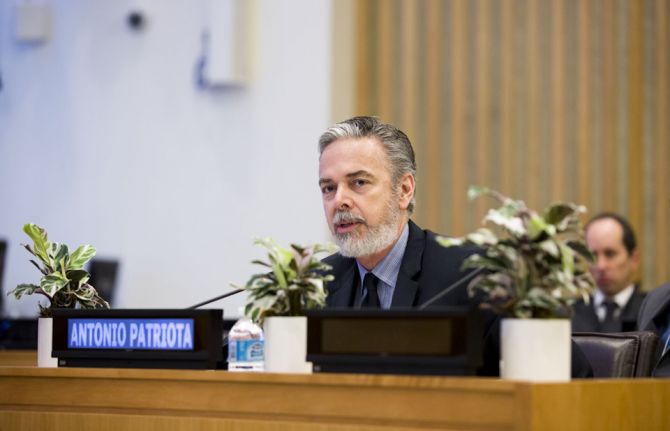
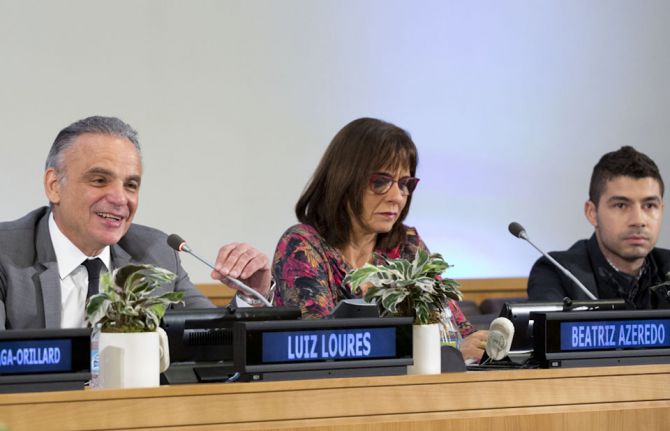
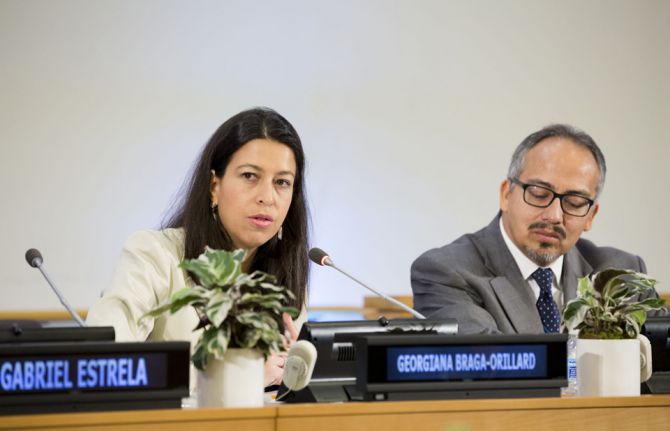
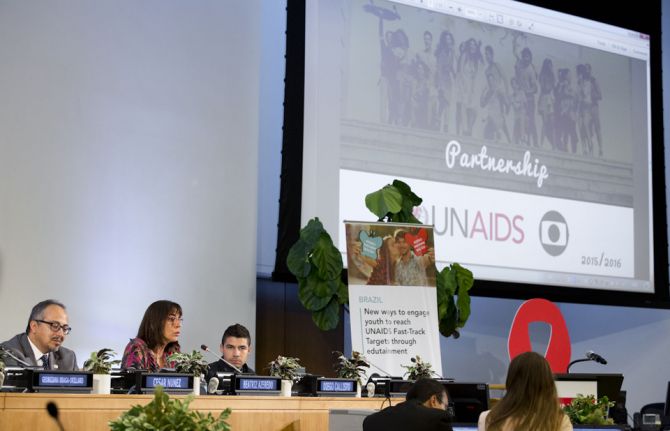
Update
New ways to engage youth to reach the UNAIDS Fast-Track Targets through edutainment
10 June 2016
10 June 2016 10 June 2016Initiatives conducted in partnership with mass media outlets have proved to positively contribute to changing the HIV-related attitudes and behaviours of millions of people at very low cost. Edutainment designs characters and storylines to provide viewers with positive role models to relate to, often at a personal and emotional level.
At a side event on the margins of the United Nations General Assembly High-Level Meeting on Ending AIDS, being held in New York, United States of America, from 8 to 10 June, UNAIDS Brazil, Globo and other partners discussed how television, both web-based and other forms, can help educate people on issues related to living with HIV by focusing on people and not statistics.
Held on 9 June and entitled “New ways to engage youth to reach the UNAIDS Fast-Track Targets through edutainment,” the side event highlighted innovative ways of working with young people in Brazil. In the country, UNAIDS and Globo have started a partnership to reach young people and discuss a variety of issues, from HIV prevention to testing, treatment and the human rights of vulnerable populations and people living with HIV. UNAIDS has also partnered with the Brazilian Government to promote activism and the leadership of young people. Together, the country is implementing new ways to engage young people to reach the UNAIDS Fast-Track Targets.
The global commitment to ending the AIDS epidemic by 2030 will demand increased investment in innovative and creative approaches that are able to Fast-Track the response and reach young people and people left behind. Innovative and creative approaches are needed to reduce stigma around HIV and promote HIV testing, prevention, care and treatment.
At the event, young people from Brazil and Africa gave examples of how they can be engaged in the response to the AIDS epidemic. Alejandra Oraa, from CNN and UNAIDS Regional Goodwill Ambassador for Latin America and the Caribbean, and James Chau, from CCTV and UNAIDS National Goodwill Ambassador for China, spoke about their experiences in working with large media for outreach.
Quotes
“The key to our success in the AIDS response so far has been the engagement and contribution of people living with HIV and vulnerable populations.”
“We now have a strong document—the Political Declaration—to use for the multilateral system to push for youth empowerment.”
“With great outreach power comes great responsibility.”
“I am an actor. I don’t know how to speak about numbers and statistics. But I do know how to talk and reach people through feelings.”
“We can only change behaviour with through empathy. That is why we worked with a group of young people from vulnerable populations to identify gaps.”
“To transform the AIDS response, we need to drive hearts as well as minds.”
“I believe that the media has a huge role to play in the AIDS response to reach people left behind.”
Related
 “Who will protect our young people?”
“Who will protect our young people?”

02 June 2025



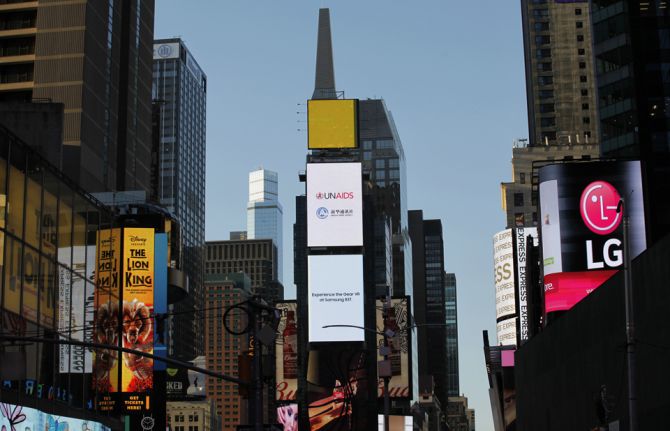
Update
UNAIDS video message goes live on Times Square billboard courtesy of Xinhua
08 June 2016
08 June 2016 08 June 2016For three days, a UNAIDS video is being played on a giant screen in Times Square, New York, United States of America.
Coinciding with the United Nations General Assembly High-Level Meeting on Ending AIDS, being held from 8 to 10 June in New York, the billboard screening will put an AIDS message at the forefront of people’s minds in one of the busiest crossroads of the world.
The 30-second clip highlights the importance of taking a Fast-Track approach to ending the AIDS epidemic, with the tag line, “Together we can reach an AIDS-free generation.”
The billboard screening is part of a partnership for the AIDS response between the Chinese news agency Xinhua and UNAIDS that was first signed in September 2011.
The year’s screening follows on from a video message from UNAIDS, supported by Xinhua, being played on a Times Square billboard during the 2011 High-Level Meeting on HIV and AIDS. Other efforts carried out during the past years under the Xinhua–UNAIDS memorandum of understanding include global media campaigns to promote public awareness of HIV and support for World AIDS Day activities. In addition, Xinhua will work with UNAIDS to publish and distribute a children’s book on living with HIV in China.
Xinhua is the world’s largest news agency, with more than 170 offices overseas and 31 domestic bureaus.
Quotes
"Hundreds of thousands of people walk through Times Square every day. Young, old, visitors or born and bred New Yorkers, we want everyone to know that ending AIDS by 2030 is possible. Thanks to Xinhua, this message is at the forefront of people’s minds.”
"Ending AIDS requires global solidarity. On the occasion of the High-Level Meeting on Ending AIDS, I would like to reiterate that as a responsible media organization, Xinhua is committed to supporting UNAIDS and other United Nations organizations in their efforts to improve the well-being of humanity.”
Related

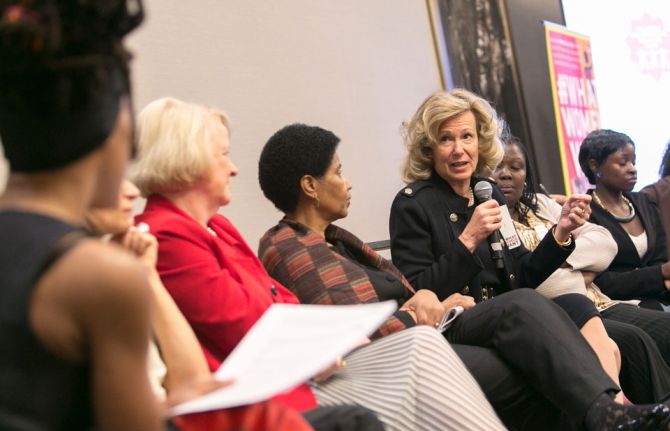
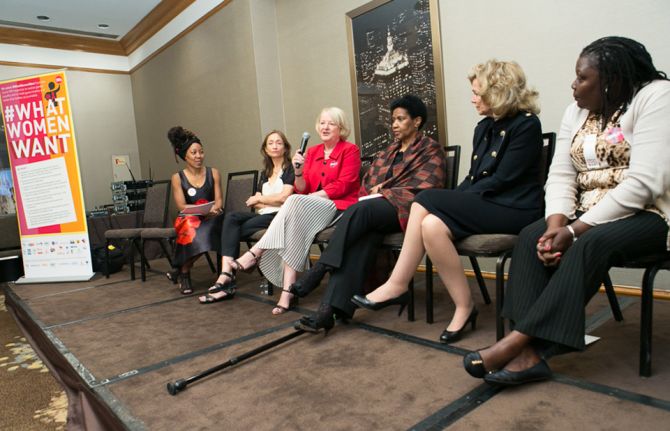
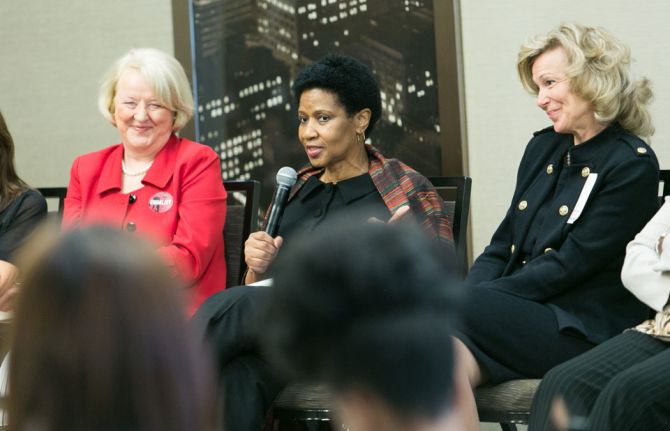
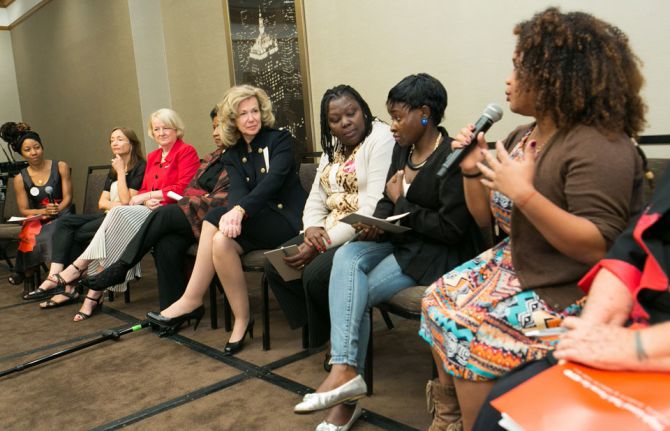
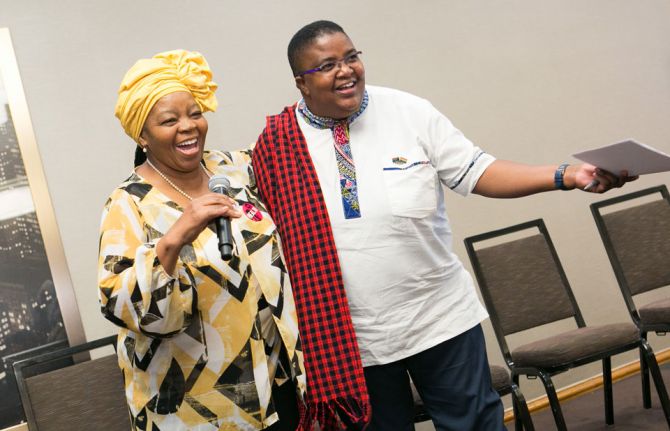
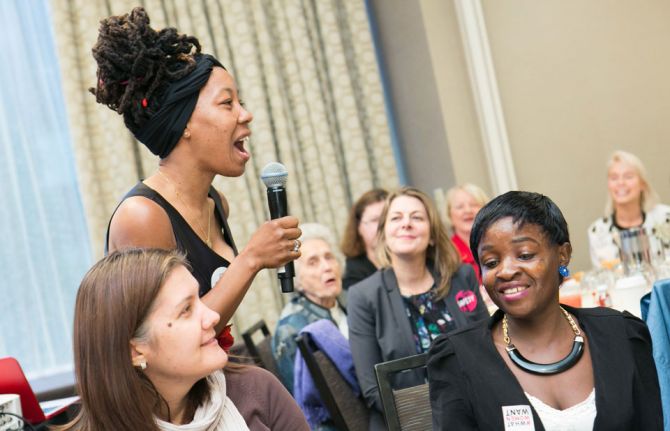
Update
Global HIV advocates gather to discuss #whatwomenwant in the next phase of the response to HIV
10 June 2016
10 June 2016 10 June 2016On 10 June, the last day of the United Nations General Assembly High-Level Meeting on Ending AIDS, held from 8 to 10 June in New York, United States of America, representatives of United Nations and women-led civil society organizations, young women and government leaders and women living with and affected by HIV, came together to inspire and move forward the role of women in the response to AIDS.
The breakfast event, entitled “#whatwomenwant”, was supported by UNAIDS and other partners and led by the ATHENA Network which represents 60 civil society partners from 25 countries dedicated to advancing gender equity and human rights in the global AIDS response.
The event was the culmination of a week of advocacy activities organised in the lead-up to the High-Level Meeting on Ending AIDS. Athena hosted a large-scale, coordinated Twitter campaign called #WhatWomenWant and led a global consultation to hear what women want and identify the specific key actions needed to leverage a sea change in the AIDS response for women and girls.
Young leaders from Africa, the Caribbean, Latin America, and Eastern Europe called for building bridges across movements, sectors and leaders. They emphasised the interconnectedness between HIV and broader women’s issues, such as child marriage and gender-based violence. They also called for meaningful places at decision-making tables and women-centered and women-led research and innovation.
In a lively session, participants shared personal views on the progress made to date and their views on what it would take to empower women and reach the goals of the 2016 Political Declaration on Ending AIDS by 2030. They explored options for stronger coordination and joint leadership to support women-led organizations and strengthen young women’s leadership in the HIV movement and beyond.
The Political Declaration strongly recognizes the importance of advancing gender equality and women’s empowerment as a human right and as critical to ending AIDS. This global political commitment is an unprecedented opportunity to focus on the specific vulnerabilities of young women and girls in all regions and to bring affected women to the centre of the agenda.
The new UNAIDS Strategy (2016-2020) is another example where commitments to gender transformative responses for human rights and gender equality have been centrally positioned. In order to meet the UNAIDS targets and the demands of what women want, sustained advocacy and accountability are essential.
The event concluded by calling for commitments to invest in young women’s leadership in order to bring sustainable change to the response to HIV.
Quotes
“The new Political Declaration on HIV and AIDS includes a significant focus on women and girls and acknowledges the interconnectedness of HIV with gender inequality, the empowerment of women, sexual and reproductive health and rights and gender-based violence. We need to invest in women and girls, especially adolescents, and give them space to have a voice globally, nationally and in the community and the family.”
“When a woman is criticized for not asking permission and for being vocal, we have to call it out every time. We need to stand up for each other. The United States Government is working hard to reach women and girls in new ways. Are we there yet? Not even close. But we are absolutely committed to getting the whole way there.”
“We need to expand the network of people who care and do. We need to work with men to talk about what masculinity is all about and how to live it. All of these things require risks. And if you don’t take risks, you don’t break ground.”
Women want love, hope, mental health, protection and to speak out and not be afraid and not have to ask permission. We are starting a revolution”
“When we talk about our stories, we are talking about where we have been and where we want to go. We must use every situation that comes our way to guide our girls to have them take up, come up and be who they want to be.”




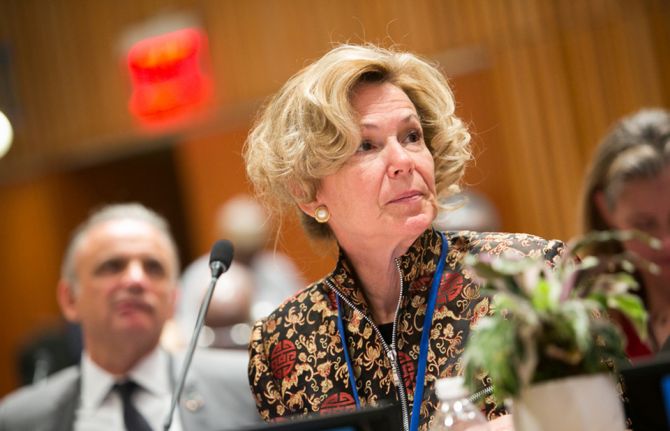
Update
Getting ahead of the looming treatment crisis: an action agenda for reaching 90–90–90
09 June 2016
09 June 2016 09 June 2016The key question of how the impending crisis in HIV treatment should be addressed dominated a panel meeting entitled “Getting ahead of the looming treatment crisis: an action agenda for reaching 90–90–90,” which met on 9 June at the United Nations General Assembly High-Level Meeting on Ending AIDS, being held from 8 to 10 June in New York, United States of America.
The panel discussion focused on the imperative of achieving the global 90–90–90 treatment target, whereby 90% of people living with HIV know their status, 90% of people who know their HIV-positive status are accessing treatment and 90% of people on treatment have a suppressed viral load.
Although such targets are realistic and achievable, the panel members argued that there is still a long way to go. Despite tremendous gains in treatment coverage, the current level is not sufficient to prevent the epidemic from rebounding in many countries.
A number of issues were cited, including the fact that half of all people living with HIV are unaware of their status and therefore not on treatment; given this figure, the number of people accessing antiretroviral therapy is expected to approximately double over the next five years. The sustainability of the supply of affordable antiretroviral medicines is uncertain, with new, more expensive, second- and third-line regimens becoming increasingly necessary. In addition, the generic market is concentrated among too few producers, which may have implications for sustainability.
The panel members suggested a range of recommendations to avert the looming treatment crisis. They stressed that the next phase of the AIDS response had to recognize new realities, such as rising migration and conflict, competing health and development issues and changing donor priorities.
Front-loading AIDS funding over the next five years was also advocated, with resources needed for ending the epidemic peaking at US$ 26.2 billion in 2020. Treatment must become more widely available and countries should support the development, production and delivery of high-quality medicines, using the Agreement on Trade-Related Aspects of Intellectual Property Rights (TRIPS Agreement) to create generics. Treatment delivery also needs to be broadened, with greater decentralization (such as community-based service delivery) and better access to viral load monitoring, the panel noted.
The need for low- and middle-income countries to increase their domestic funding was also raised, along with the role of the international community in lending its support where necessary to reach the 90–90–90 treatment target as a sound investment for global health and sustainable development.
During her remarks in the panel session, the United States Global AIDS Ambassador, Deborah Birx, announced a new US$ 100 million investment fund for key populations. Noting that although the 90–90–90 treatment target applies to everyone, to ensure access to all, the United States of America, through the President's Emergency Plan for AIDS Relief, would be taking action to ensure 90–90–90 for key populations. The new fund will support innovative, tailored, key population-led approaches to expand access to proven HIV prevention and treatment services so that the words “no one left behind” are translated into emergency action today.
Quotes
“I think we are all in agreement that the world is at an important turning point in the AIDS response. The current level of HIV treatment coverage is cup half-full and not sufficient to prevent the large number of AIDS-related deaths and to prevent the epidemic from rebounding in many countries. There must be a further massive scale-up in the provision of antiretroviral therapy, and this scale-up needs to happen as fast as possible.”
“Countries need to fully leverage their negotiating potential, including for pooled procurement, voluntary licensing mechanisms and/or other TRIPS Agreement (Agreement on Trade-Related Aspects of Intellectual Property Rights) flexibilities. Countries will have an increasing number of people on lifelong treatment. They need to intensify their efforts to rethink, scale and smarten the delivery of antiretroviral therapy.”
“Our government is committed that generic medicines for HIV will be available to all those who need it. India shall remain committed to the Doha Declaration on the TRIPS Agreement (Agreement on Trade-Related Aspects of Intellectual Property Rights) and Public Health. I don’t think there could be a clearer declaration of our policy.”
“Not all the news is good. In our region, most bilaterals have stopped financing. If this continues, it will become a true catastrophe. Without help, not only we will not be able to achieve 90–90–90, but those on HIV treatment will be taking obsolete medications. The Middle East and North Africa needs solidarity and needs it more than any region in the world.”
Related


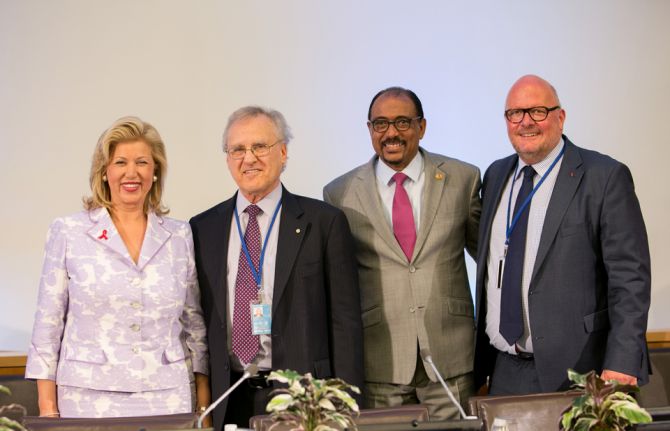
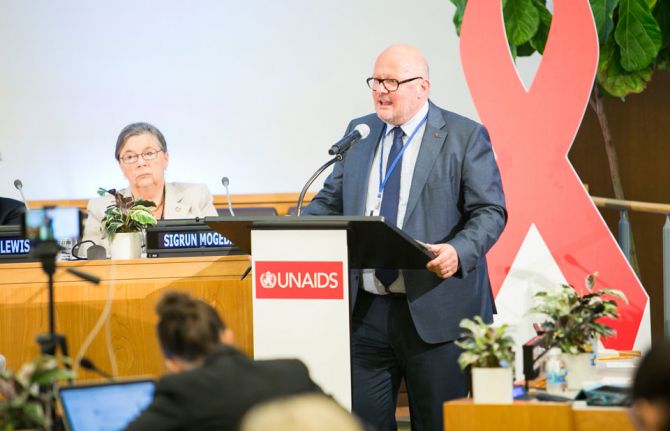
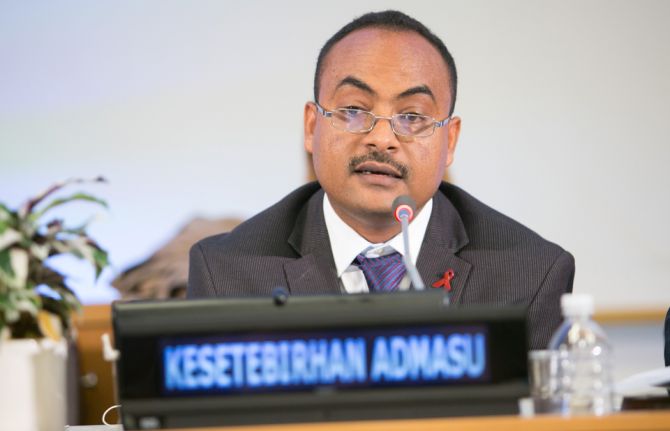
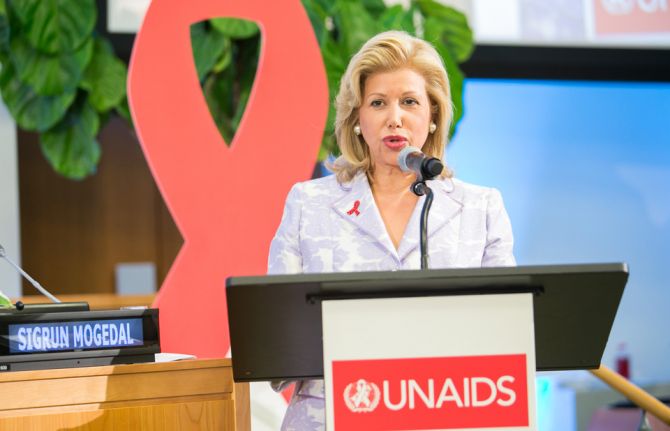
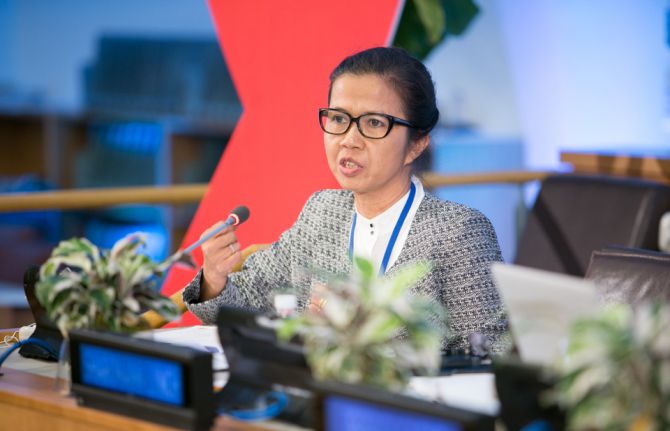
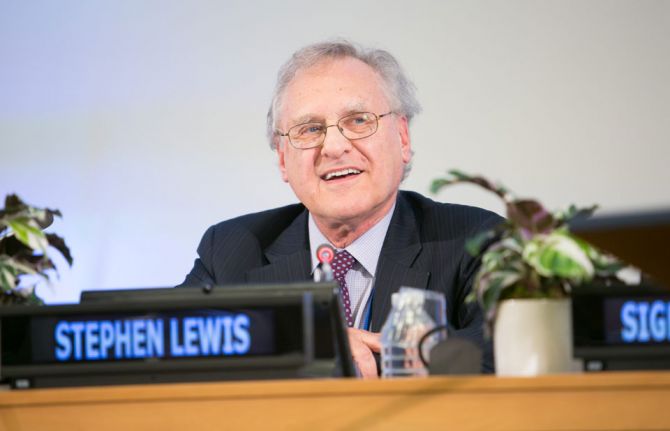
Update
Urgent need to strengthen community health systems to achieve the 90–90–90 treatment target
10 June 2016
10 June 2016 10 June 2016The 90–90–90 treatment target cannot be reached without a substantially greater involvement of a well-resourced and well-trained community health workforce, experts told a side event at the United Nations General Assembly High-Level Meeting on Ending AIDS, taking place in New York, United States of America, from 8 to 10 June.
Speakers at the side event, held on 9 June and entitled “90–90–90 and human resources for health,” emphasized that the 90–90–90 treatment target offers a road map towards the ultimate goal of ending the AIDS epidemic by 2030. However, shortages in human resources for health pose a grave threat to hopes for ending the epidemic as a public health threat.
Community health workers represent a potentially transformative mechanism for closing health workforce gaps and accelerating progress in scaling up HIV treatment and improving treatment outcomes. Kesetebirhan Admasu, Minister of Health of Ethiopia, described how the country’s health extension worker programme has substantially improved health-care access and helped make health services more sensitive to the needs of communities.
Community health systems are especially critical for ensuring access to essential health services among people who face challenges in accessing mainstream services, including members of key populations. Surang Janyam, of the Service Workers In Group in Thailand, explained how trained community health workers have expanded access to HIV services among sex workers, men who have sex with men and transgender people in Thailand and increased community ownership of the AIDS response.
Sigrun Mogedal, of the Global Health Workforce Alliance, said that the AIDS response should partner and coordinate closely with the many efforts already being undertaken to strengthen the health workforce. In 2016, the World Health Assembly approved a new global strategy for the health workforce, prioritizing the strengthening of community health systems. The Earth Institute of Columbia University is spearheading a global partnership to mobilize 1 million community health workers in Africa, and countries such as Ghana have taken important steps to train and deploy new cadres of community health workers.
However, the lack of growth in international HIV assistance potentially jeopardizes the world’s capacity to build a strong and durable health workforce to achieve the 90–90–90 treatment target, speakers in the session emphasized. Jeffrey Sachs, Director of the Earth Institute, and Stephen Lewis, Co-Founder of AIDS-Free World, called for urgent action to mobilize new resources for AIDS and to ensure that sufficient new funding is channelled to community systems.
Quotes
“We need to generate broad global commitment and action to ensure sufficient human resources to achieve 90–90–90.”
By moving from service client to service provider, communities can provide testing, antiretroviral therapy and pre-exposure prophylaxis for our members.”
“We need to consider task-shifting to patient groups and to patients themselves. These models are now being brought to scale in some provinces. We need more patient autonomy and more self-administered therapy. Treatment needs to fit into people’s lives, not the other way around.”
“Reaching 90–90–90 is absolutely vital and indispensable for turning the tide against the epidemic.”
“We know technically how to end the AIDS epidemic. 90–90–90 is especially important because it mobilizes our efforts not only for the decency and humanity of keeping people alive but also to end transmission of this disease and to bring this epidemic to a full close.”
“The vital role of community health workers has to be maximized if we hope to reach 90–90–90. The AIDS movement shows us what can be achieved through communities. We must work hand in hand with communities and provide them with the human and financial resources they need to fulfil their mission.”
“I appeal for the mobilization of all the people and resources and the implementation of large-scale resources to end paediatric AIDS. I ask you to give a voice to those who have no voice.”
"Ten to 15 years ago human resources for health was not on the table. Today, we have come a long way to create an agenda for the health workforce. As we now talk about what we can do in the AIDS movement to reach that extra step to those who are denied services, we have partners . . . We should not go alone.”
Related

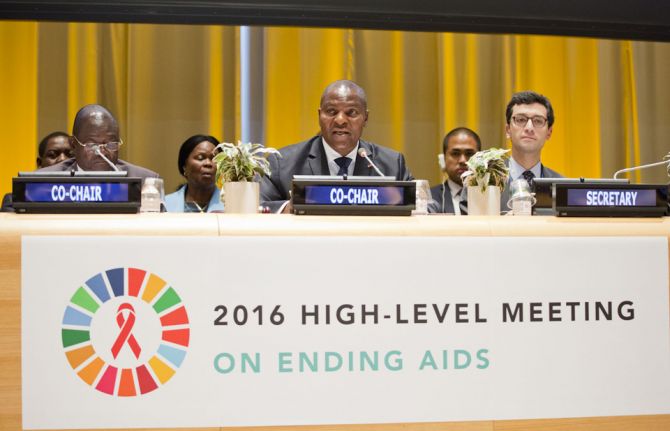
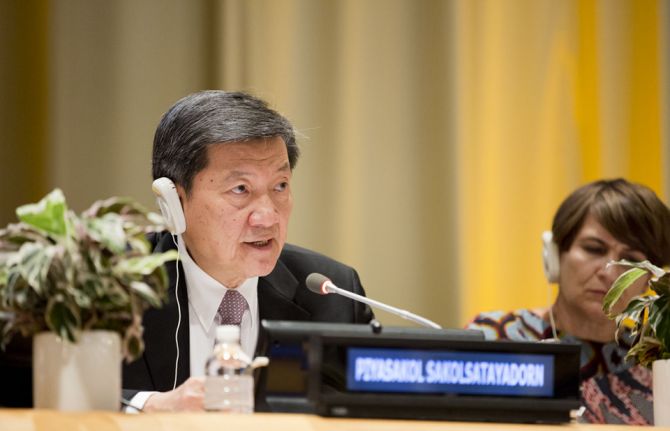
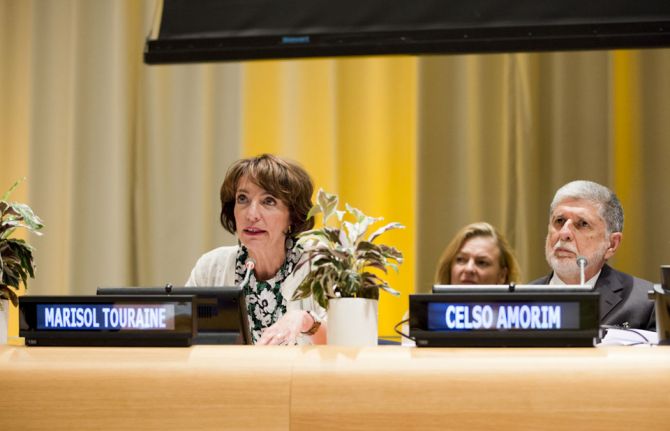
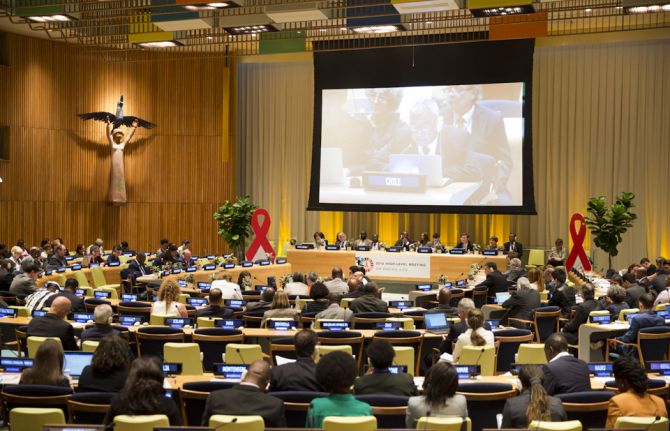
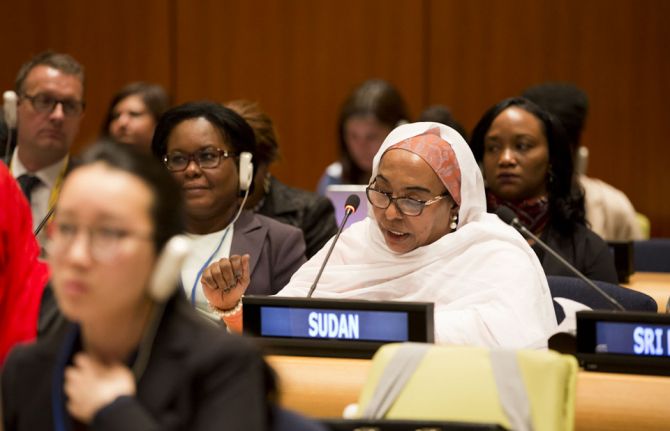
Update
Leaving no one behind: ending stigma and discrimination through social justice and inclusive societies
09 June 2016
09 June 2016 09 June 2016The AIDS epidemic will not be ended without efforts to end discrimination, respond to exclusion and advance social justice, according to a panel meeting held on 9 June during the United Nations General Assembly High-Level Meeting on Ending AIDS, taking place in New York, United States of America, from 8 to 10 June.
The panel, entitled “Leaving no one behind: ending stigma and discrimination through social justice and inclusive societies,” stressed that upholding the values of inclusion and social justice is fundamental to creating societies that advance dignity and share the benefit of wealth and health for all. It called for seizing the unparalleled opportunity offered by the 2030 Agenda for Sustainable Development and the newly adopted Political Declaration on HIV and AIDS to realize the vision of ending AIDS as a public health threat by 2030 in a manner grounded in the principles of equality, inclusion and respect for the rule of law.
The panel highlighted the efforts of civil society in demanding protection against stigma and discrimination and calling for justice, dignity and access to health services for all. Yet, panellist and speakers recognized that across the world, women and girls, young people, migrants, sex workers, men who have sex with men, people who inject drugs, transgender people and prisoners continue to be left behind because of discriminatory and punitive laws, policies and practices. Participants also expressed concern about restrictive legal and policy environments that hinder the work of civil society organizations in supporting the HIV response.
The panel called for moving from recognition of these challenges to actions for addressing them. It noted that an epidemic such as AIDS can be transformed into a pathfinder for addressing structural inequalities and vulnerabilities provided that all stakeholders translate their commitments to leaving no one behind into concrete programmes and funding for human rights.
The panel concluded with an urgent call for action on the following: ending discrimination in health care, education and the workplace; addressing intellectual property regimes that prevent millions of people from accessing life-saving HIV, hepatitis and other treatments; removing punitive laws that block effective responses for people living with HIV and other key populations; investing in human rights programmes and efforts by civil society; and setting clear goals with targets and indicators on ending discrimination, repealing punitive laws and advancing social justice.
Quotes
"There will be no end of AIDS without addressing the laws, policies and practices that make women, young people, prisoners, sex workers, men who have sex with men and people who use drugs vulnerable to HIV and limit their access to health services. Now is the time to expand human rights programmes that work and have proved successful in addressing discrimination in different contexts. More broadly, there can be no achievement of the health targets in Sustainable Development Goal (SDG) 3 without commitment to SDGs 5, 10 and 16 and the vision of eliminating inequalities and building inclusive societies.”
“Decriminalization of drug use, same-sex relationships and sex work is a matter of urgency. Instead of criminalizing, we should promote protective laws, policies and practices. This will make ending the AIDS epidemic a lot easier!”
“Gender inequality remains the most pervasive form of inequality around the world. Women and girls face extraordinary, and often intersecting, forms of discrimination. This is especially true for women living with HIV, migrants and refugee women, adolescent girls, women who use drugs or are sex workers, and lesbian, bisexual and transgender women and men. This is why in our work we must always aim to reach the last woman.”
Related

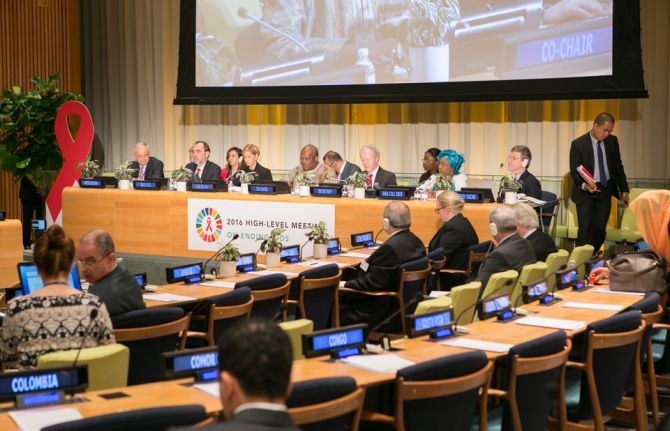

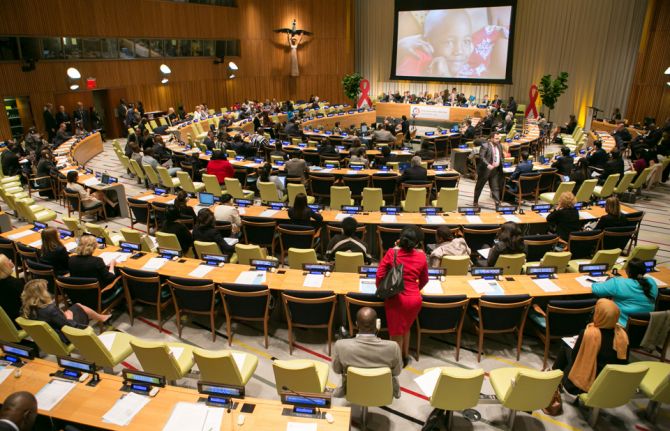
Update
Financing the end of AIDS: the window of opportunity
09 June 2016
09 June 2016 09 June 2016A panel meeting at the United Nations General Assembly High-Level Meeting on Ending AIDS, being held from 8 to 10 June, warned that the global commitment to end AIDS as a public health threat by 2030 cannot be met without increased funding, more efficiency and improved programme effectiveness.
Members of the panel, which met on 8 June and was entitled “Financing the end of AIDS: the window of opportunity,” argued that greater investment in the AIDS response needs to be front-loaded in the next five years and reach the US$ 26.2 billion needed by 2020 in low- and middle-income countries. Governments and development partners must increase their investments to close the nearly US$ 7 billion gap between the resources available for HIV in 2014 and the 2020 peak. This will avoid a looming funding crisis for treatment and prevention.
According to the gathering’s political leaders, experts and representatives of international organizations and civil society, this extra funding will allow the world to meet the 2020 interim targets on the road to ending the epidemic. These targets include the 90–90–90 treatment target of 90% of people living with HIV knowing their status, 90% of people who know their HIV-positive status accessing treatment and 90% of people on treatment having a suppressed viral load, reducing new HIV infections to fewer than 500 000 and elimination of HIV-related discrimination.
It was argued that the AIDS response must spend increased funding wisely by adopting the Fast-Track approach of rapidly scaling up treatment and prevention services with more efficient and effective programmes. The panel also discussed mechanisms to facilitate development partners and low- and middle-income countries front-loading resources to reach the ultimate goal of ending the AIDS epidemic as a public health threat by 2030.
Beyond the call for more funding and better allocation of existing resources, other critical factors for the sustainability of the response were highlighted, including local production of antiretroviral medicines in Africa, improvement in the procurement of commodities through price negotiations and access and affordability of modern pharmaceuticals in all countries.
There was a strong call for the following: facilitating the transition of countries moving into higher-income brackets, including supporting community-based programmes; fully funding the needs of gay men and other men who have sex with men, people who inject drugs, sex workers, transgender people and prisoners, and particularly young people among those populations; investing in communities; and scaling up public–private partnerships.
The panel stressed forcefully that the cost of inaction for individuals, communities, countries and regions was simply too high and that the world could not afford to miss this window of opportunity to make funding sustainable and reinvigorate the HIV response over the next five years.
Quotes
“Countries which can pay should do so in order for the international community to support other countries which have the will but not the financial means.”
“We need to guarantee full funding for prevention, treatment and care for people who inject drugs, gay men and other men who have sex with men, sex workers, transgender people and prisoners.” ,
“If we really want to take up the challenge of ending AIDS by 2030, we need to focus on innovative financing. Innovation financing since 2002 has yielded US$ 8 billion, including airline taxes and coupons for vaccines. It will be even more important now if we are to reach the Sustainable Development Goals.”
“The Global Fund to Fight AIDS, Tuberculosis and Malaria is everyone in this room, government, the private sector, civil society. If we all come together in the partnership that the Global Fund represents, we can absolutely end HIV, tuberculosis and malaria for good.”
“It is not just where the money comes from, it’s where the money is spent. It needs to be spent for people living with HIV, for women and for key populations. It is our lives on the line.”
“People who inject drugs have been left furthest behind in the global response to HIV. We know the HIV epidemic among people who inject drugs is driven by stigma, discrimination and violence. The lack of political willingness for harm reduction can be observed all over the world. We can virtually end AIDS among people who inject drugs by simply redirecting money from the war on drugs to harm reduction.”
“Innovation is something that we put as a top criterion for how we can deliver. We are always looking for new ideas, and I think they can come from our dedicated civil society organizations.”
“We need to see this endeavour as an investment from one generation to another. For the 2030 goals, a multisectoral approach will not allow us to reach only one objective but also to reach others. Today, crises are global and therefore require a global response.”
“For us, strengthening the health system is critical. We have a very ambitious objective to screen and treat, but with weak health systems we will be unable to achieve our goals.”
“We have a tremendously important opportunity with the replenishment of the Global Fund to Fight AIDS, Tuberculosis and Malaria. We need to look at the needs, estimate budgets based on those needs and then mobilize the resources. Everything should be driven by the analytics.”

